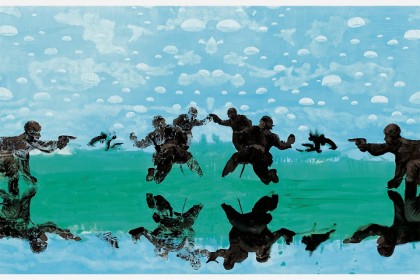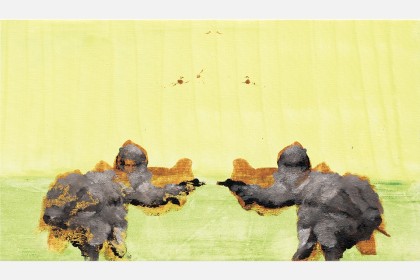INFORMATION
“gnabmelaP no gnidnecseD spoortaraP esenapaJ Japanese Paratroops Descending on Palembang” was inspired by “Japanese Paratroops Descending on Palembang” by Goro Tsuruta (1890–1969), a documentary war painting that depicts a successful surprise attack on the Dutch-controlled Palembang oil field (now part of Indonesia) on February 14, 1942 by airborne troops of the Imperial Japanese Army, who dropped from the sky to occupy the oil field. This was a major victory for Japan. News of the assault was widely disseminated, inspiring martial songs and even a movie on the “sacred soldiers from the heavens.”
Noticing that in almost all the war paintings depicting the bravery of Japanese troops, the enemy at the other end of the gun barrel is absent, Ozawa produced paintings partially reproducing “Japanese Paratroops Descending on Palembang” with a mirror image alongside. The mirrored gun points back at the shooter, conveying the reality that a gun pointed at others, over time, turns on the person who pointed it. Ozawa presented this series of paintings in “Tsuyoshi Ozawa Imperfection: Parallel Art History”, a solo exhibition at Chiba City Museum of Art in 2018. It is part of his life’s work, tracing with his own hands the story of war painting, the darkest aspect of art since the advent of modern art.







